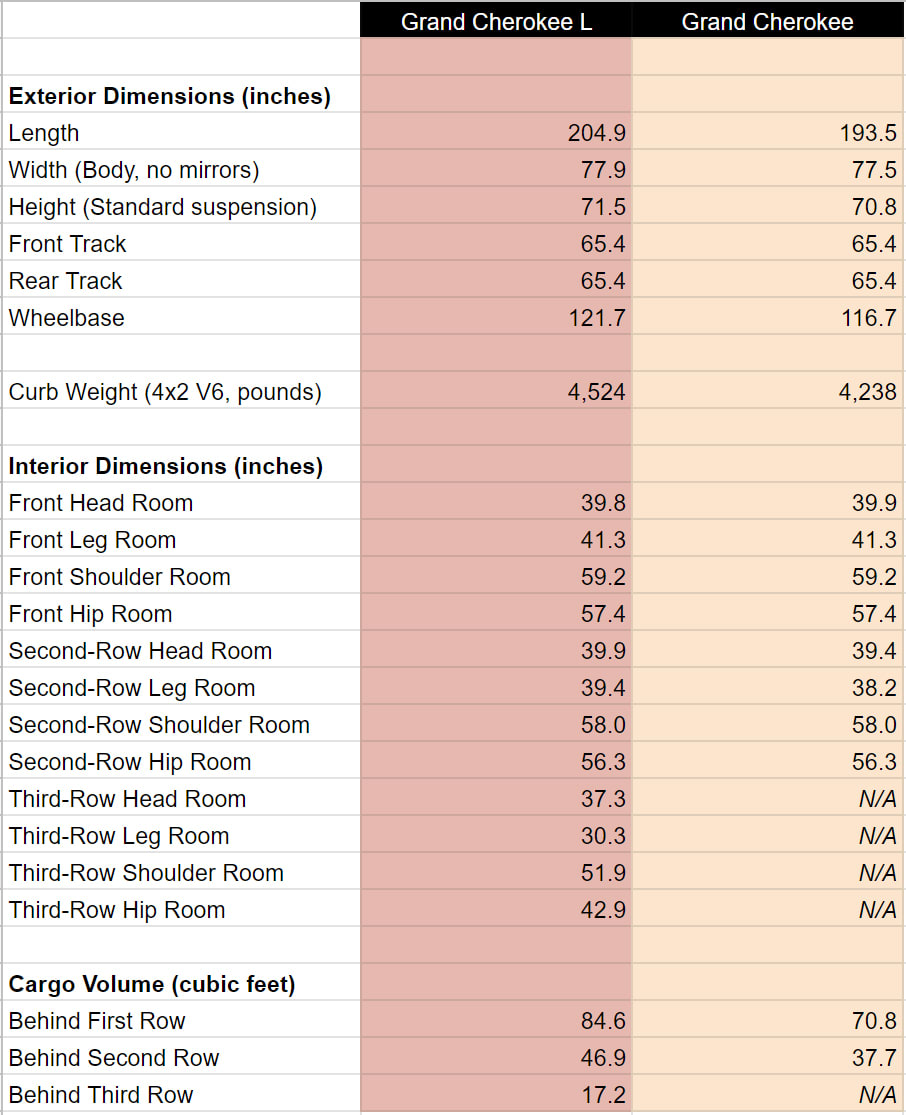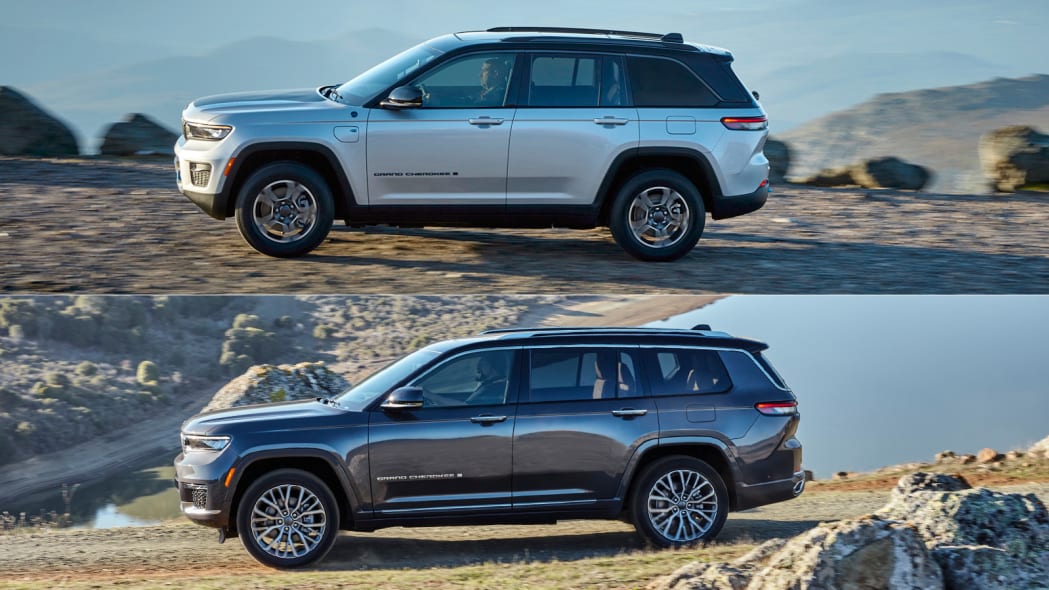In just a year, Jeep has gone from offering zero three-row vehicles to two: the 2021 Jeep Wagoneer and the 2021 Jeep Grand Cherokee L. While the Wagoneer is mechanically related to the Ram 1500 pickup and competes with the Chevrolet Tahoes of the world, the Grand Cherokee L landed in the ultra-competitive three-row crossover set with Palisades and Tellurides. And if you’re wondering why the all-new L showed up before the two-row Grand Cherokee was replaced, consider that three-row midsize SUVs sell substantially better than two-row ones. The difference between a Honda Pilot and Passport is almost comical.
It’s perhaps surprising, then, that the two-row Jeep Grand Cherokee sold as well as it did. Now, the new generation version has finally arrived and it’s actually more than just an L with part of the back chopped off. As you can see in our side-by-side spec comparison below, there are greater differences than just “one has two rows, the other three.”

It’s not just the extra foot of overall length that differentiates the L from the new two-row Cherokee. The L actually gains 5 inches of wheelbase and tacks on 285 pounds of additional curb weight; that’s one or two American passengers you’re adding before you even open a door. The new two-row model should be a bit nimbler than the L we drove back in June. There are a couple of smaller differences (a 0.4-inch difference in body width and a significantly different D pillar design) but by and large, they’re otherwise identical – same sausage, etc.
Inside, things get a bit weirder. The front row is virtually (though not completely) identical, as is to be expected. Behind that, we start to see the packaging differences between the two. The long-wheelbase L offers slightly more head and leg room in the second row, but the same amount of shoulder and hip room. This makes sense since they’re the same width. What’s really noteworthy here is that the Grand Cherokee L didn’t have to compromise second-row space in its mission to offer a third row of seats. The L’s middle-row seats also slide, offering 7.1 inches of adjustment, while the two-row model’s rear seat bases are fixed.

And once we get to cargo room, well, it’s the L’s game. While the area behind the third row may seem a bit paltry at 17.2 cubes, that’s on par for its class and bigger than the trunks you’ll find in most midsize sedans, just shaped differently. Technically, yes, the two-row model will fit more cargo in the rear with all of the seats up, but that’s not exactly a fair comparison. Fold the L’s third-row bench down and you get a whopping 46.9 cubic feet, blowing away the five-seater’s 37.7 cubes. With the L’s second row folded, you get 84.6 cubic feet, which is about right for a midsize, three-row SUV, and commendable from Jeep given the inherent packaging compromises of its RWD-based platform.
Beyond the dimensions, the two-row Grand Cherokee can be had as the off-road-oriented Trailhawk, the plug-in hybrid 4xe and, their forces combined, the new Trailhawk 4xe. None of those were offered for the 2021 Grand Cherokee L and we’ve heard nothing at the time of this writing to indicate when or if the three-row will get them. If one is more likely than the other for the L, it’s the 4xe.
It’s clear that Jeep put more effort into the Grand Cherokee L than merely cramming an extra row of seats into a two-row body. There’s also more differentiation here than Pilot and Passport. Whether the extra utility it provides (at the expense of some off-road capability, if that matters to you) is worthwhile is entirely up to you.
How they compare in photos
2022 Jeep Grand Cherokee
2021 Jeep Grand Cherokee L

